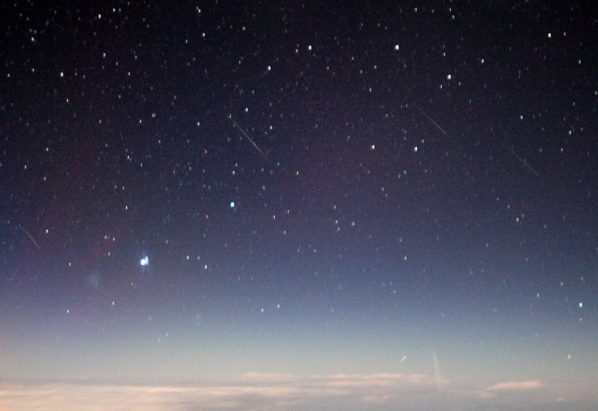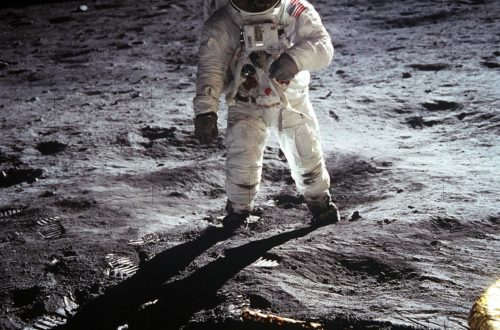Stargazing Calendar for November 2025
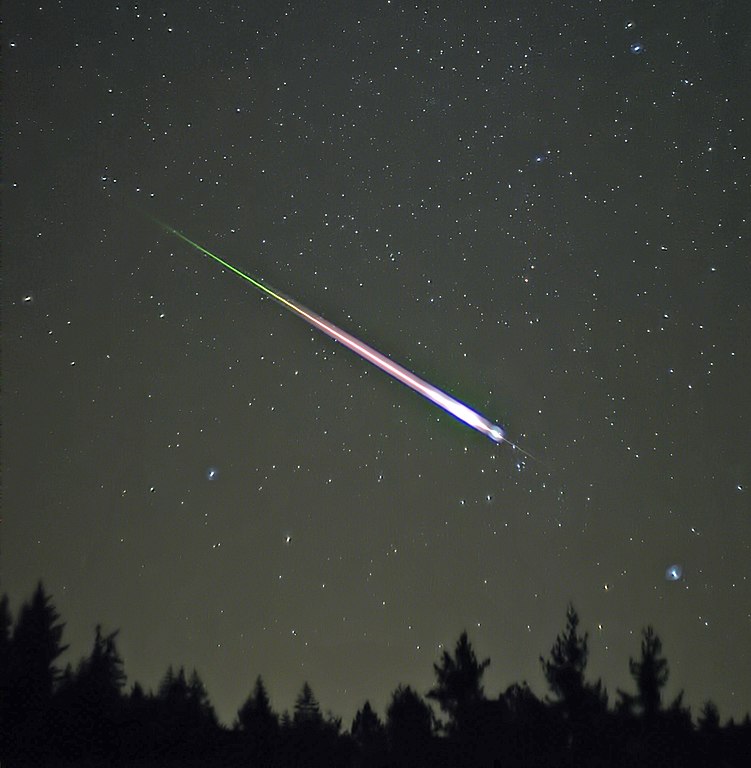
The night sky comes alive this month with dazzling sights for skywatchers. From conjunctions to meteor showers, stargazing in November 2025 offers plenty to anticipate. Whether you’re new to astronomy or a seasoned observer, this month’s celestial lineup promises unforgettable views.
Would you like to be notified of stargazing events?
List of Meteor Showers in November 2025
- Southern Taurids: Start on September 10; peak on October 10; end on November 20.
- Orionids: Start on October 2; peak on October 22; end on November 7.
- Northern Taurids: Start on October 20; peak on November 12; end on December 10.
- Leonids: Start on November 6; peak on November 17; end on November 30.
- α-Monocerotids: Start on November 15; peak on November 21; end on November 25.
- November Orionids: Start on November 13; peak on November 28; end on December 6.
- Andromedids: Start on November 25; peak on November 30; end on December 5.
- Phoenicids: Start on November 28; peak on December 2; end on December 9.
We also have a complete list of meteor showers for the entire year of 2025 here.
List of Planetary Conjunctions in November 2025
- Conjunction of the Moon and Saturn in Pisces and Aquarius on November 2.
- Close approach of the Moon and Pleiades in Taurus on November 6.
- Conjunction of the Moon and Jupiter in Gemini on November 10.
- Conjunction of Mercury and Mars in Scorpius on November 12.
- Conjunction of the Moon and Mars in Scorpius and Ophiuchus on November 21.
- Conjunction of the Moon and Saturn in Pisces and Aquarius on November 29.
Moon Phases in November 2025
As you know, the Moon has a big impact on the visibility of celestial bodies and astronomical events in the night sky. So to help you with stargazing, here’s a calendar of the phases of Moon for this month of November 2025:
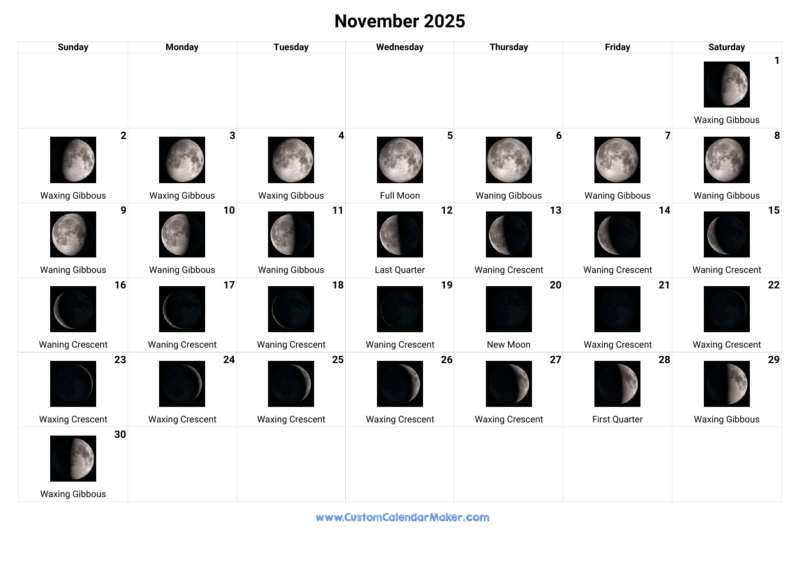
November 2: Conjunction of the Moon and Saturn
The Moon and Saturn will reach conjunction passing within 3°39′ of each other while sharing the same right ascension.
Around the same time, the two bodies will also make a close approach (appulse) reaching 3°13′ from each other, but not sharing the same right ascension.
The Moon will be at apparent magnitude -12.6 in the constellation of Pisces and Saturn at magnitude 0.7 in the neighbouring constellation of Aquarius. The Moon will be 12 days old waxing gibbous at 90%.
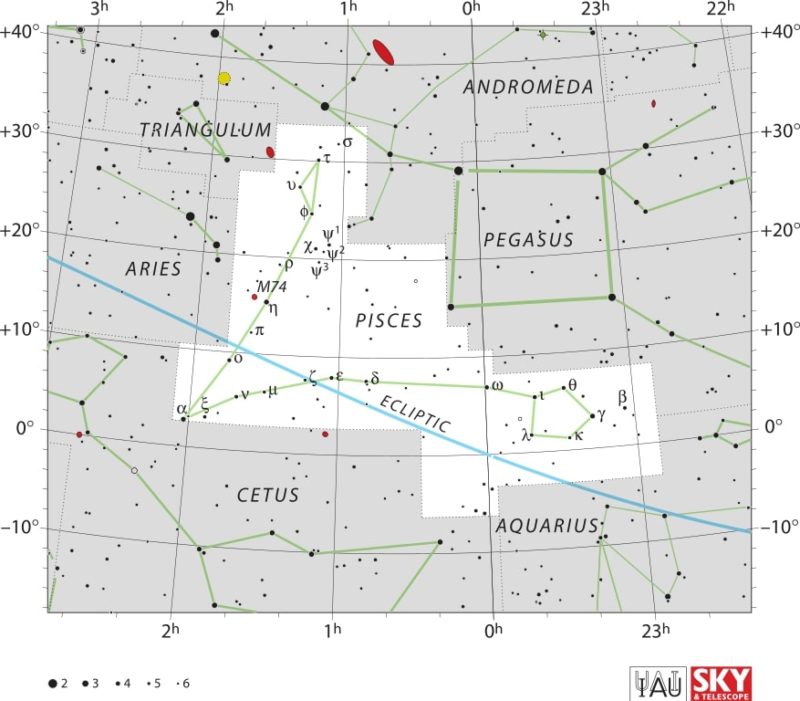
November 6: Close approach of the Moon and Pleiades

The Moon and the Pleiades star cluster (M45) will make a close approach or appulse, by passing within 49.0 arcminutes of each other. This will happen in the constellation of Taurus.
You can observe this astronomical event with the naked eye because the Moon will be at apparent magnitude -12.8 and M45 at 1.3. The Moon will be 16 days old, meaning it will be waning gibbous at 96%.

November 10: Conjunction of the Moon and Jupiter
The Moon and Jupiter will be at conjunction by sharing the same right ascension and passing within 3°56′ of each other.
Around the same time, the two bodies will also make a close approach (appulse) reaching 3°50′ from each other, but not sharing the same right ascension.
The two celestial bodies will meet in the constellation of Gemini with the Moon at apparent magnitude of -12.4 and Jupiter at -2.4. The Moon will be 20 days old waning gibbous at 64%.
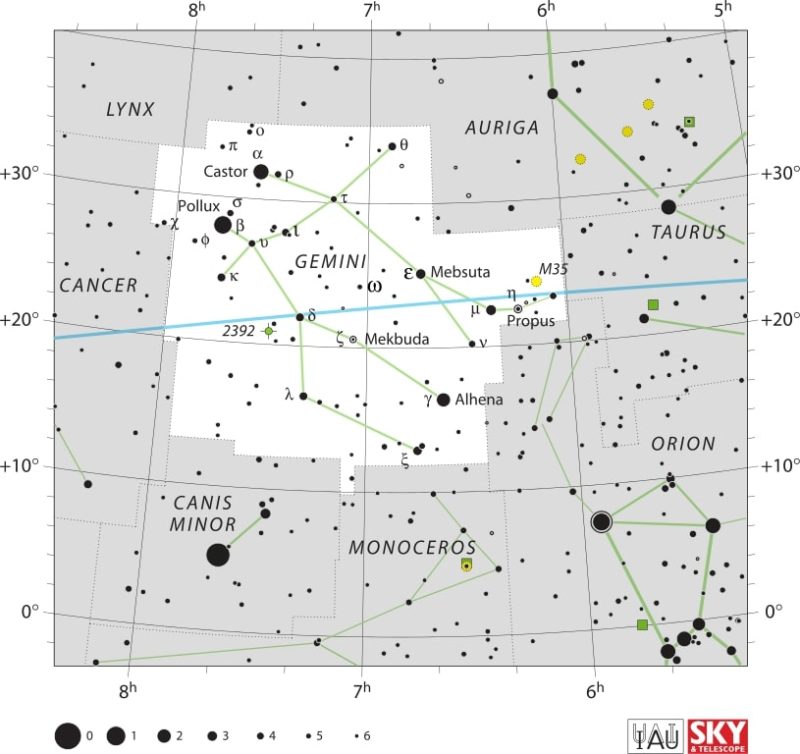
November 11: Jupiter enters retrograde motion
Jupiter will begin retrograde motion, which means it will stop traveling eastward through the constellations and instead turn to travel west. All of the outer planets in the solar system periodically experience this orientation reversal, which occurs a few months before they reach opposition.
Ancient observers were troubled by retrograde motion because it didn’t fit with their belief in uniform circular orbits around the Earth. The phenomenon is actually due to Earth’s orbit around the Sun, which shifts our perspective and causes planets to appear to move back and forth in the sky while continuing their overall eastward path through the constellations.
Jupiter can be spotted in the constellation of Gemini with an apparent magnitude of -2.4. (Constellation map already displayed above, when discussing the conjunction of the Moon and Jupiter on November 10.) The Moon will be 21 days old waning gibbous at 50%.
November 11: Asteroid 471 Papagena at opposition
Asteroid 471 Papagena will reach opposition, when it lies opposite to the Sun in the sky. It will reach the highest point in the sky around midnight local time.
On this occasion, the asteroid Papagena will pass within 1.262 AU of Earth and reach a peak brightness of apparent magnitude 9.1. Unfortunately even at the peak, this asteroid will be too faint to observe with the naked eye. You will need at least a 4 inch telescope, which you should point towards the constellation of Cetus. The Moon will be a 21 days old waning crescent at 47%.
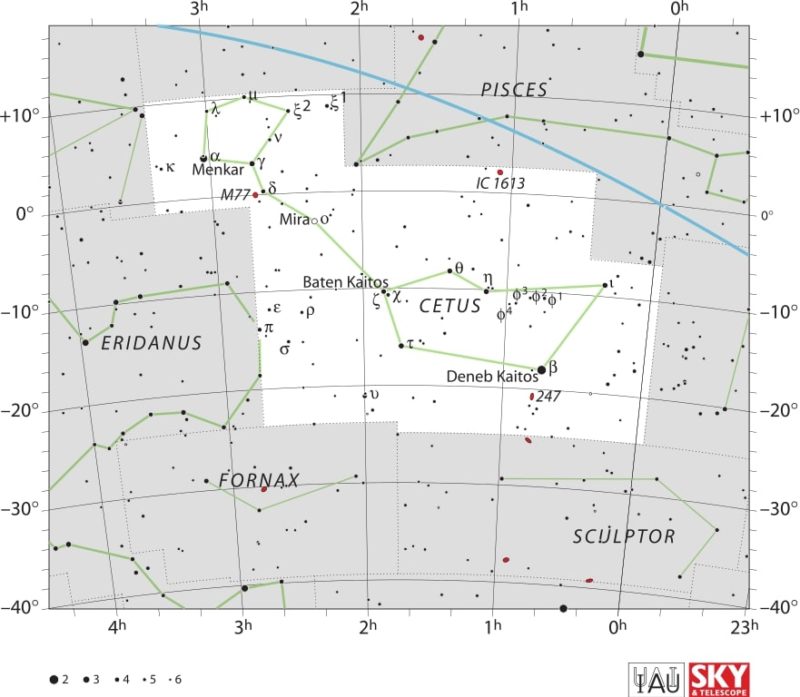
November 12: Northern Taurid meteor shower peak
The Northern Taurids will peak with a zenithal hourly rate of 5. The Moon will be a 22 days old waning crescent at 42%.
Some meteors may also be spotted between October 20 and December 10. They will radiate from the constellation of Taurus at the speed of 29 km/s on average. (Constellation map already displayed above, when discussing the close approach of the Moon and Pleiades on November 6.)
November 12: Conjunction of Mercury and Mars
Mercury and Mars will pass within 1°18′ of each other while sharing the same right ascension, in what is called a conjunction.
Both planets will be visible in the constellation of Scorpius, with the Mercury at apparent magnitude 1.1, and Mars at 1.4. The Moon will be a 22 days old waning crescent at 42%.
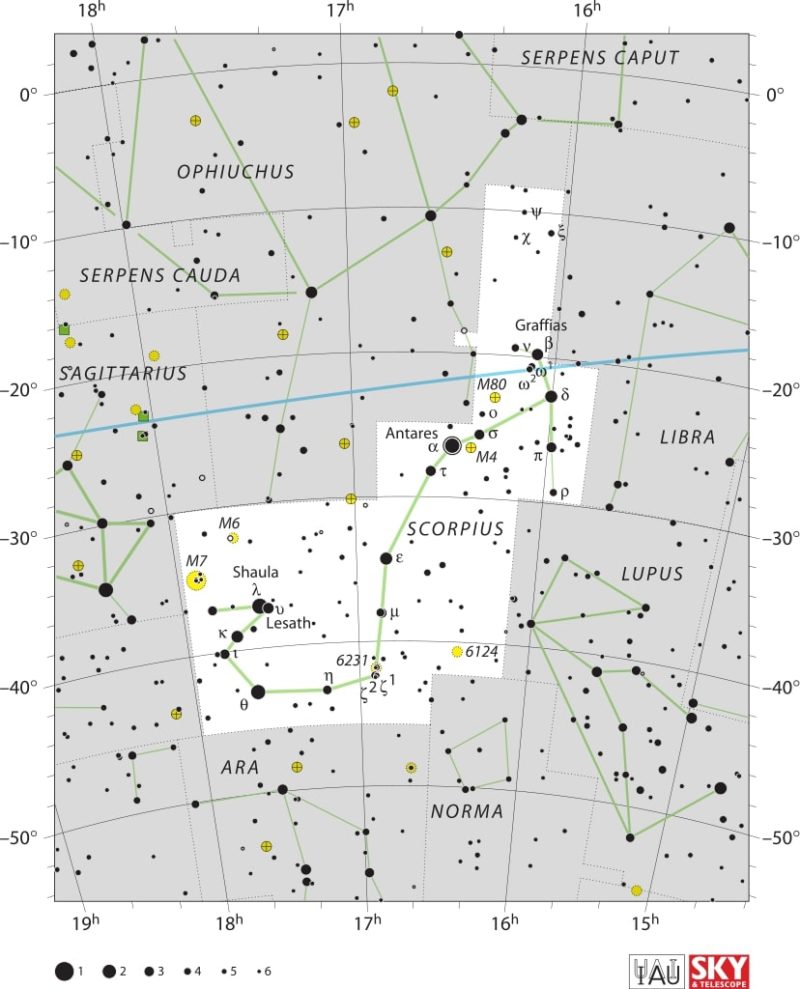
November 17: Leonid meteor shower peak
The Leonids are a medium-sized meteor shower with 15 meteors on average during the peak if conditions are perfect. (See featured image of a previous shower.) The Moon will be a 27 days old waning crescent at 3% and so it won’t be interfering much with stargazing this middle of November 2025.
Although the peak is on November 17, some meteors could also be spotted between November 6 and 30.
The meteors will appear to radiate from the constellation of Leo at the fast average speed of 71 km/s. They originate from debris of the comet 55P/Tempel-Tuttle.
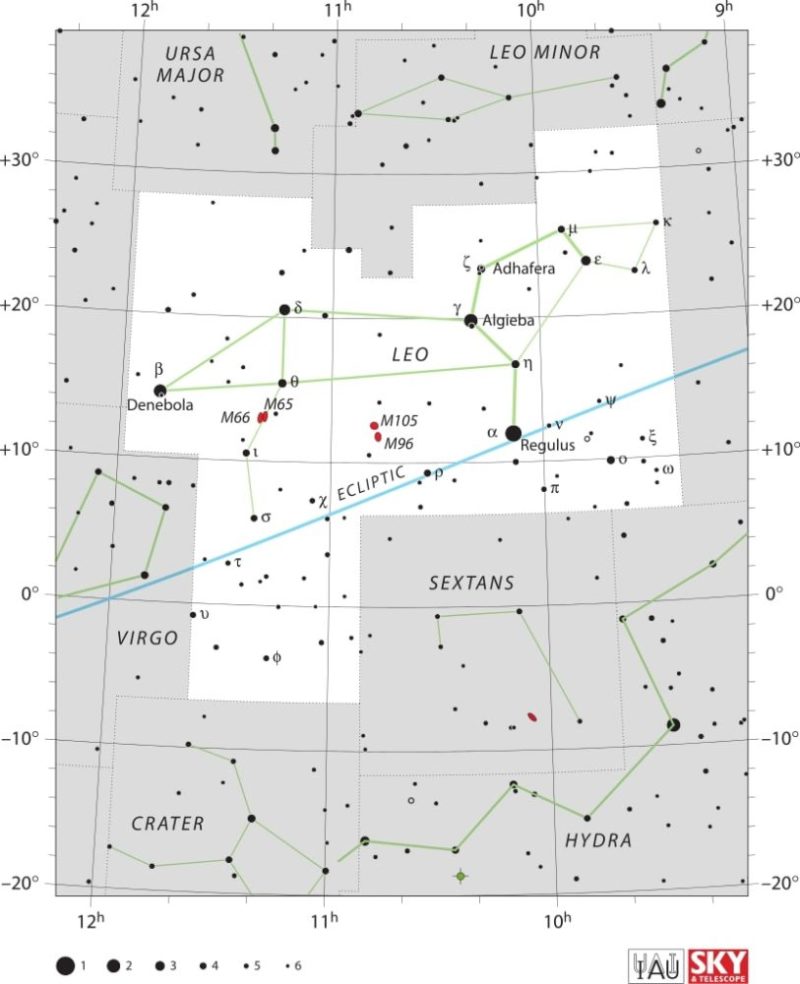
November 17: The Pleiades at their highest point in the sky
The Pleiades (also known as Messier 45 or M45) will reach their highest point in the sky at around midnight local time.
With an apparent magnitude of 1.3, the Pleiades can be seen with the naked eye, but for better results I would recommend at least a pair of standard binoculars. The Moon will be a 27 days old waning crescent at 3%.
The Pleiades cluster is a part of the Taurus constellation. (Constellation map already displayed above, when discussing the close approach of the Moon and Pleiades on November 6.)
November 21: Uranus at opposition

Uranus will reach a point opposite to the Sun in the sky, known as an opposition. This will happen around midnight local time, regardless of where in the world you are observing from.
At around the same time Uranus will also reach perigee or closest approach to Earth at a distance of 18.51 AU. This would be the best time to observe the ice giant.
With an apparent magnitude of 5.6, Uranus can be observed with a standard pair of binoculars. Point them in the Taurus constellation. (Constellation map already displayed above, when discussing the close approach of the Moon and Pleiades on November 6.)
November 21: Conjunction of the Moon and Mars
The Moon and Mars will be at conjunction by sharing the same right ascension and passing within 4°27′ of each other.
You can find the Moon in the constellation of Scorpius at apparent magnitude of -8.0, while Mars will be in Ophiuchus at magnitude 1.4. The Moon will be a one day old waxing crescent at 2%.
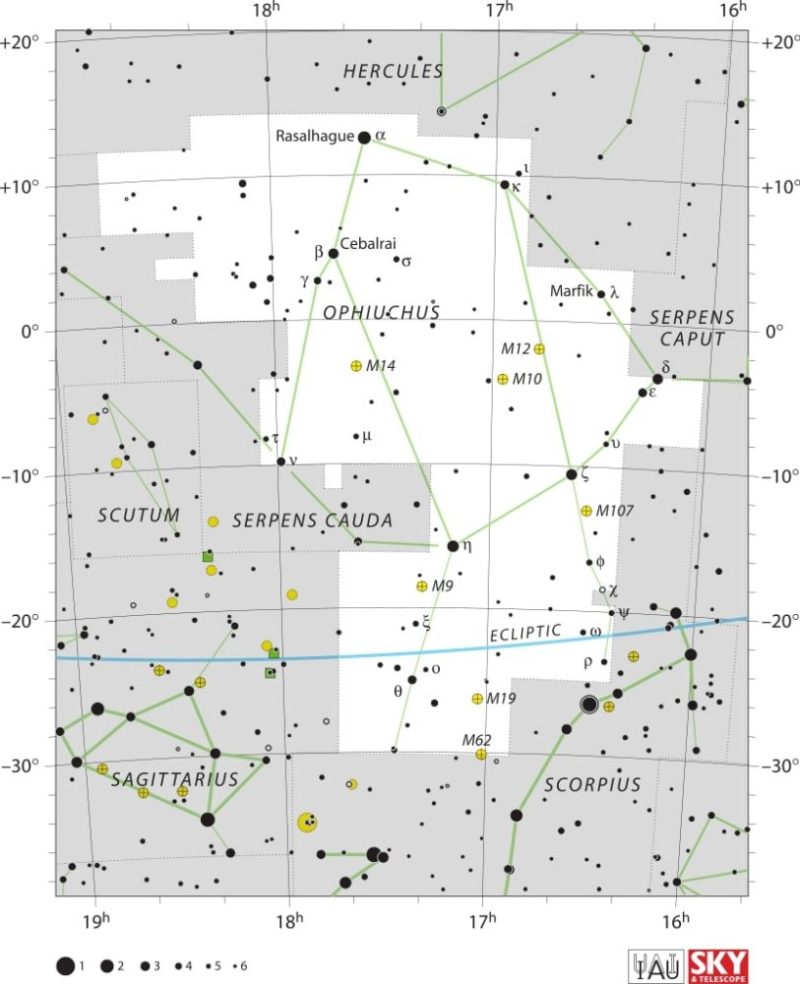
November 21: α-Monocerotid meteor shower peak
The Alpha Monocerotids are a variable meteor shower. Although the peak is on November 21, some meteors could also be spotted between November 15 and 25.
The meteors will appear to radiate from the constellation of Monoceros at the fast average speed of 65 km/s.

November 22: Comet 210P/Christensen at perihelion
The comet 210P/Christensen will reach perihelion, meaning it will reach the closest point in its orbit to the Sun at a distance of 0.52 AU. It will have an apparent magnitude of 10.0 according to the BAA Comet Section, so requiring a large telescope. Look in the constellation of Libra.

November 27: The Hyades at their highest point in the sky
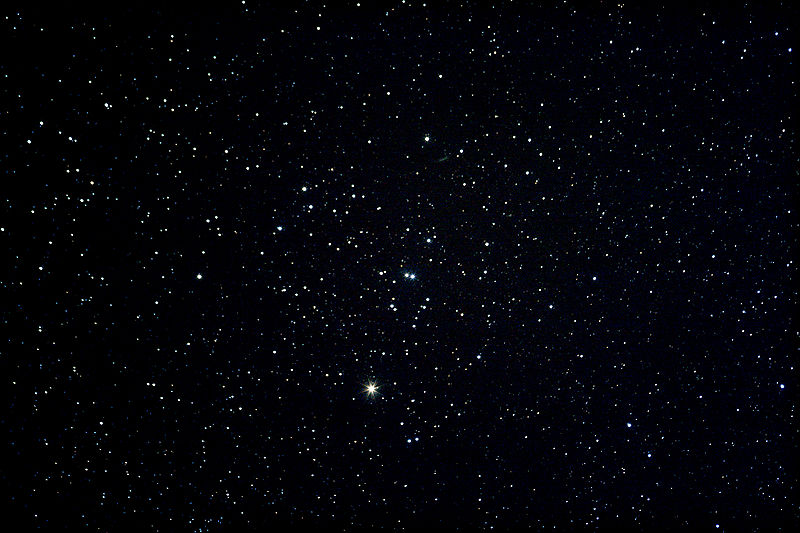
The Hyades (also known as Caldwell 41, Collinder 50, or Melotte 25) is the nearest open cluster at only 153 light-years away. The cluster of stars will reach its highest point in the sky at around midnight local time.
With an apparent magnitude of 1.0, the Hyades can be seen with the naked eye, but for better results I would recommend at least a pair of standard binoculars. Fortunately the Moon won’t be interfering much with observation because it will be a 7 days old waxing gibbous at 51%.
The Hyades cluster is a part of the Taurus constellation, of which it forms the head. (Constellation map already displayed above, when discussing the close approach of the Moon and Pleiades on November 6.)
November 28: Saturn ends retrograde motion
Saturn will end retrograde motion, which means it will stop traveling westward through the constellations and instead return to the more usual eastward motion instead. All of the outer planets in the solar system periodically experience this orientation reversal, which occurs a few months before they reach opposition.
Saturn can be spotted in the constellation of Aquarius with an apparent magnitude of 0.8. (Constellation map already displayed above, when discussing the conjunction of the Moon and Saturn on November 2.)
November 28: November Orionid meteor shower peak
The November Orionids are the final meteor shower to peak this month of November. It is a small one with only 3 meteors per hour on average during the peak, with ideal viewing conditions. The Moon will be an 8 days old waxing gibbous at 55%.
Some meteors can also be seen between November 13 and December 6, radiating from the constellation of Orion at the average speed of 44 km/s.
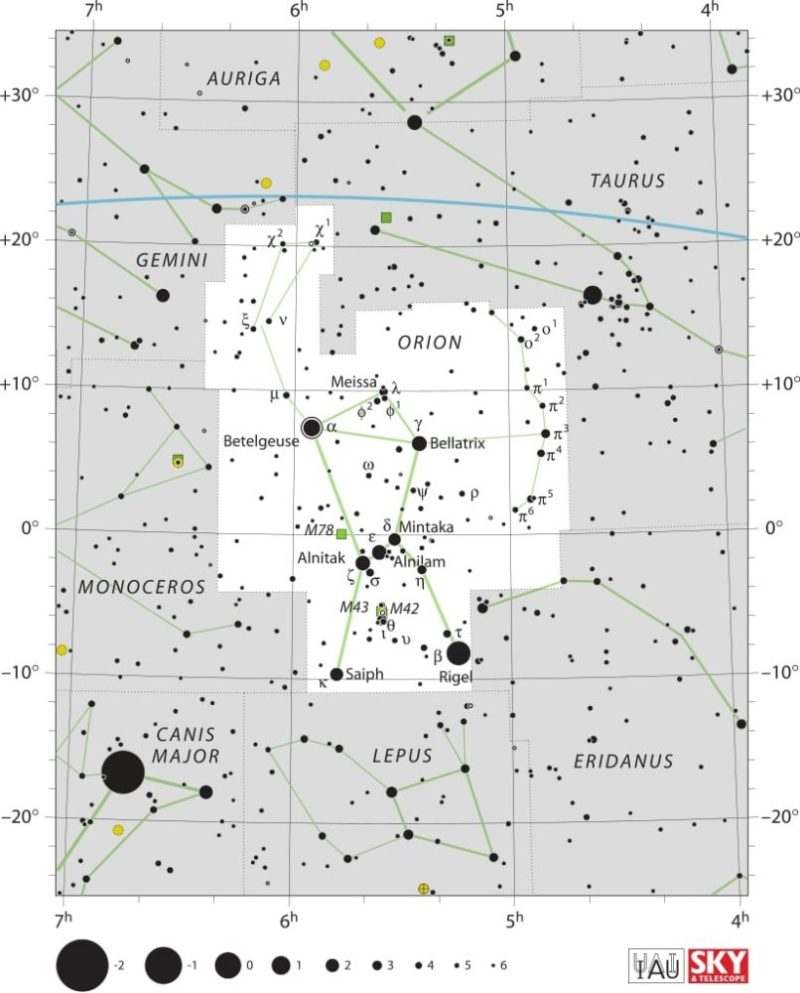
November 29: Conjunction of the Moon and Saturn
The Moon and Saturn will reach conjunction passing within 3°45′ of each other while sharing the same right ascension.
Around the same time, the two bodies will also make a close approach (appulse) reaching 3°18′ from each other, but not sharing the same right ascension.
The Moon will be at apparent magnitude -12.3 in the constellation of Pisces and Saturn at magnitude 0.8 in the neighbouring constellation of Aquarius. The Moon will be an 9 days old waxing gibbous at 71%. (Constellation map already displayed above, when discussing the conjunction of the Moon and Saturn on November 2.)
November 30: Mars at apogee
Mars will reach apogee (most distant from Earth) because it will be at the exact point opposite to Earth, on the other side of the Solar System. It will reach a maximum distance of 2.42 AU from Earth and will be located in the constellation of Ophiuchus. The Moon will be an 10 days old waxing gibbous at 77%. (Constellation map already displayed above, when discussing the conjunction of the Moon and Mars on November 21.)
November 30: Andromedids meteor shower peak
The Andromedids are a variable meteor shower. Although the peak is on November 30, some meteors could also be spotted between November 25 and December 5.
The meteors will appear to radiate from the constellation of Andromeda at the fast average speed of 18 km/s.
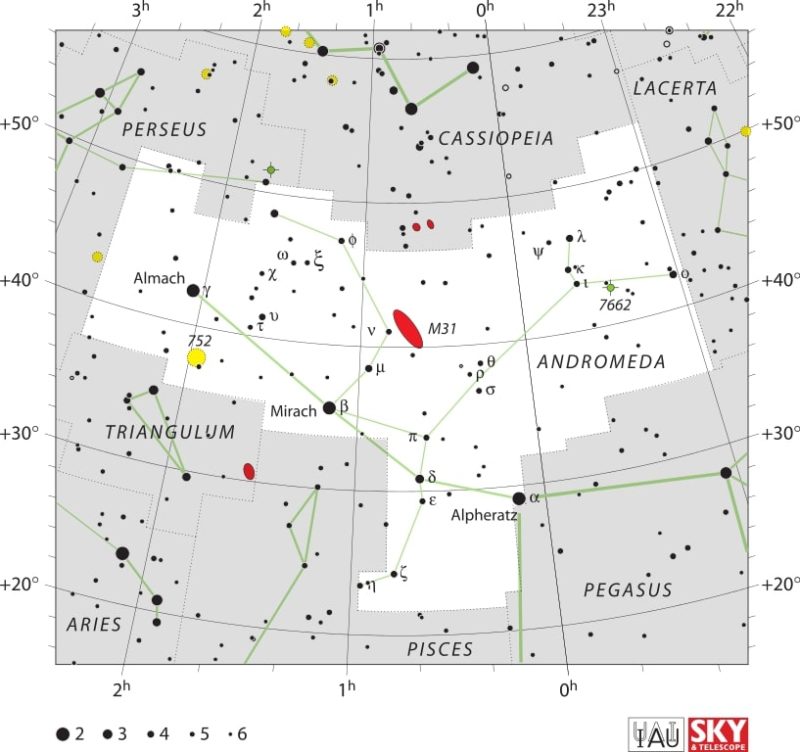
Positions of the Planets in November 2025
- Mercury: The closest planet to the Sun can be seen at dawn and dusk travelling across the constellation of Scorpius. This planet, being the closest to the Sun, will appear to move quickly in the night sky and its position will change in the following weeks.
- Venus: The sister planet can be seen travelling across the constellation of Virgo. Just like Mercury, Venus can only be seen at dawn and dusk.
- Mars: The red planet can be seen in the constellation Libra, then Scorpius, and finally Ophiuchus at the very end of the month.
- Jupiter: The gas giant is visible in the constellation of Gemini. Jupiter can easily be spotted with the naked eye, even in highly illuminated cities.
- Saturn: The ringed giant can be seen with the naked eye in the constellation of Aquarius.
- Uranus: The ice giant can be seen in the constellation of Taurus with the use of a telescope.
- Neptune: The blue giant requires a telescope pointed in the constellation of Pisces in order to be seen.
Positions of Dwarf Planets and Large Asteroids in November 2025
- Ceres: The asteroid belt’s lone dwarf planet can be seen in the constellation of Cetus with the help of a telescope.
- Vesta: This large asteroid can be seen in the constellation of Ophiuchus with a telescope.
- Pallas: The asteroid can be observed with a telescope in the constellation of Aquila.
- Hygiea: The fourth largest asteroid can be found with a telescope in the constellation of Gemini.
- Pluto: This distant dwarf planet can be found in the constellation of Capricornus with the help of a large telescope.
Major astronomical events next month – December 2025
- December 2: Phoenicids meteor shower peak
- December 6: December φ-Cassiopeids meteor shower peak
- December 7: Puppid-Velids meteor shower peak
- December 8: Monocerotids meteor shower peak
- December 8: Asteroid 16 Psyche at opposition
- December 10: Neptune ends retrograde motion
- December 11: σ-Hydrids meteor shower peak
- December 12: λ-Scupltorids meteor shower peak
- December 14: Geminids meteor shower peak
- December 16: Comae Berenicids meteor shower peak
- December 20: December Leonis Minorids meteor shower peak
- December 21: December solstice
- December 22: Ursids meteor shower peak
Conclusion
November 2025 offers a spectacular lineup of stargazing events for skywatchers. From conjunctions to multiple meteor showers, every night brings something new to see. Whether you’re a casual observer or a seasoned enthusiast, stargazing this November 2025 promises a rewarding experience filled with highlights that deepen your appreciation for astronomy.
To ensure you don’t miss out on any celestial happenings, sign up for our newsletter to receive stargazing calendars and more updates. Keep your telescopes ready and clear your calendar for these cosmic highlights!
Sources:
- Planetary ephemerides produced by NASA’s Jet Propulsion Laboratory (JPL)
- International Meteor Organization
See also:
- Previous month’s calendar: Stargazing Calendar for October 2025
- Next month’s calendar: Stargazing Calendar for December 2025
Would you like to receive similar articles by email?



